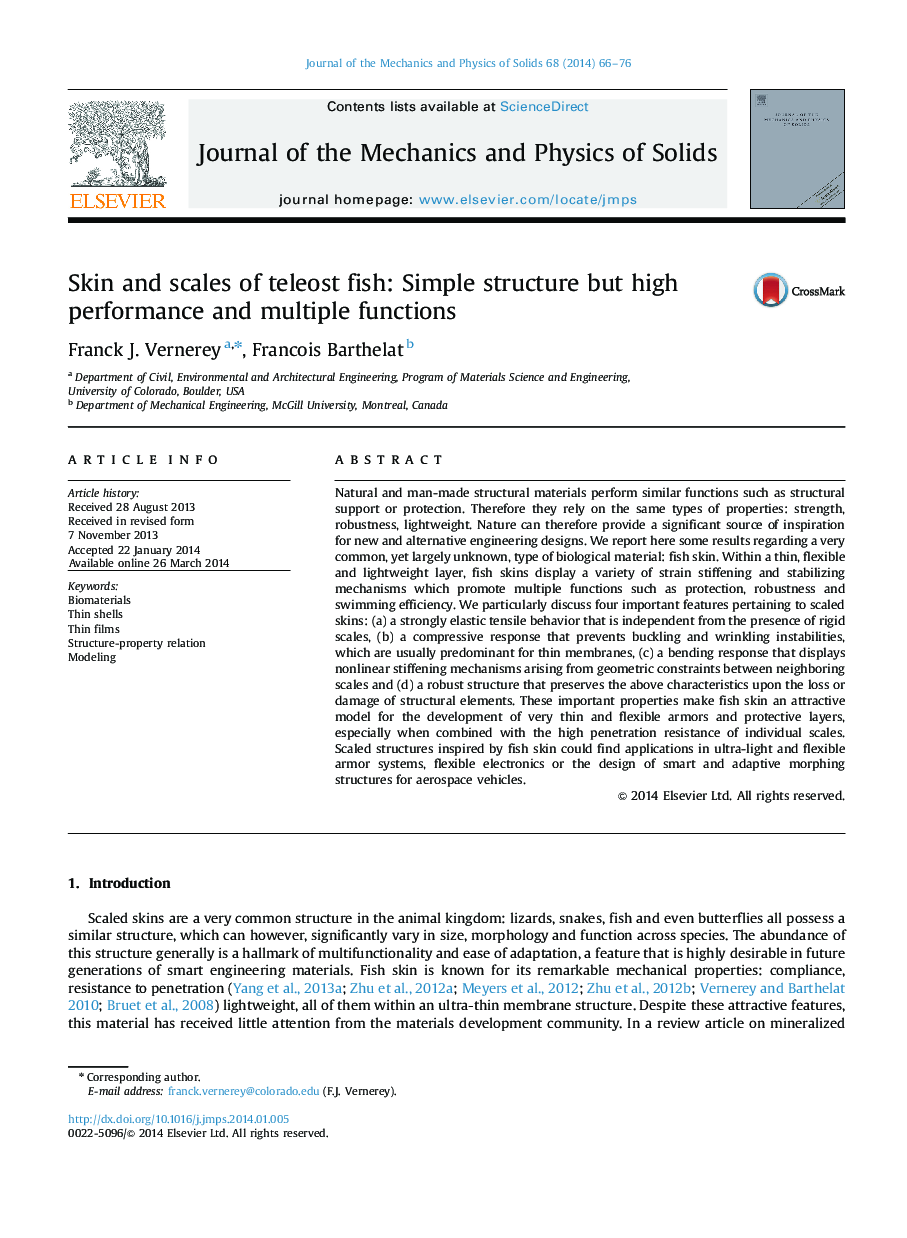| Article ID | Journal | Published Year | Pages | File Type |
|---|---|---|---|---|
| 799444 | Journal of the Mechanics and Physics of Solids | 2014 | 11 Pages |
•Fish skin is a flexible membrane that displays a nonlinear stiffening mechanism in bending while remaining highly flexible in tension.•The presence of scale enables a soft compressive response of the skin that postpones buckling and wrinkling instabilities, which are usually predominant for thin membranes.•Fish skin is a robust and light-weighted structure that preserves its unique mechanical characteristics upon the loss or damage of structural elements.•The above characteristics originate from the balanced interactions between scale rotation and bending, which can be tuned based on scale and dermis properties.
Natural and man-made structural materials perform similar functions such as structural support or protection. Therefore they rely on the same types of properties: strength, robustness, lightweight. Nature can therefore provide a significant source of inspiration for new and alternative engineering designs. We report here some results regarding a very common, yet largely unknown, type of biological material: fish skin. Within a thin, flexible and lightweight layer, fish skins display a variety of strain stiffening and stabilizing mechanisms which promote multiple functions such as protection, robustness and swimming efficiency. We particularly discuss four important features pertaining to scaled skins: (a) a strongly elastic tensile behavior that is independent from the presence of rigid scales, (b) a compressive response that prevents buckling and wrinkling instabilities, which are usually predominant for thin membranes, (c) a bending response that displays nonlinear stiffening mechanisms arising from geometric constraints between neighboring scales and (d) a robust structure that preserves the above characteristics upon the loss or damage of structural elements. These important properties make fish skin an attractive model for the development of very thin and flexible armors and protective layers, especially when combined with the high penetration resistance of individual scales. Scaled structures inspired by fish skin could find applications in ultra-light and flexible armor systems, flexible electronics or the design of smart and adaptive morphing structures for aerospace vehicles.
